Everything you are reporting is consistent with insufficient power to the GSM module, when it tries to register with the network, even though you think your power supply is OK.
Do you have access to an oscilloscope and experience using it?
I don't have an oscilloscope :(
The lack of an oscilloscope means that, using a multimeter instead, you cannot know the true voltage for any short dips (or spikes) due to the low sampling rate of multimeters. (Oscilloscopes have limitations too, but with their much higher sampling rates then for issues like this, an oscilloscope is usually sufficiently fast to show the necessary detail.)
But I've measured the voltage when it's powered and I've noticed that voltage drops from 4.2v to about 3.8v for a brief time when it restarts.
That result tells you that you do need to investigate the power delivery to the GSM module further, as the voltage at the module could actually dip lower than the 3.8 V reading you have reported, for the reason that I explained above.
I created a simple buck regulator using MIC4576 regulator according to it's schematics and adjusted it's output to 4.2 volts. It can provide 3A of current.
Not necessarily true. Depending on exact construction method, component layout, and component choices, I could make a buck regulator which will not provide the maximum current which the switching device itself (in your case, the MIC4576) is capable of. Or to say it another way: You need to prove that the power supply is really capable of supplying that voltage to the GSM module - you cannot assume that a 3A switcher, in a home-built design, is actually capable of supplying its full "off load" voltage, at the rated current.
The thickness and length of the wiring between the power supply and the GSM module, also affect inductance and resistance and so affect the power available at the GSM module.
i powered it through my laptop charger, so there's no shortage of current in the circuit.
Again, you cannot assume that. I have seen laptop power supplies which did not meet their claimed specifications (especially third-party ones from ebay etc.).
Some choices for you include:
- Use a friend's or colleague's known-working GSM module + power supply setup, and substitute just your GSM module (i.e. use their known-good power supply).
- Try using shorter and/or using thicker wires between the power supply and GSM module, to reduce the voltage drop there.
- Get access to an oscilloscope to perform further measurements.
- In some cases (especially with marginal power supplies, long power cables etc.) adding extra capacitance on the GSM module, can help during the high-power GSM transmission bursts. A remote possibility is that you have a defective GSM module e.g. that large tantalum capacitor on the "stock photo" you gave, might be faulty.
